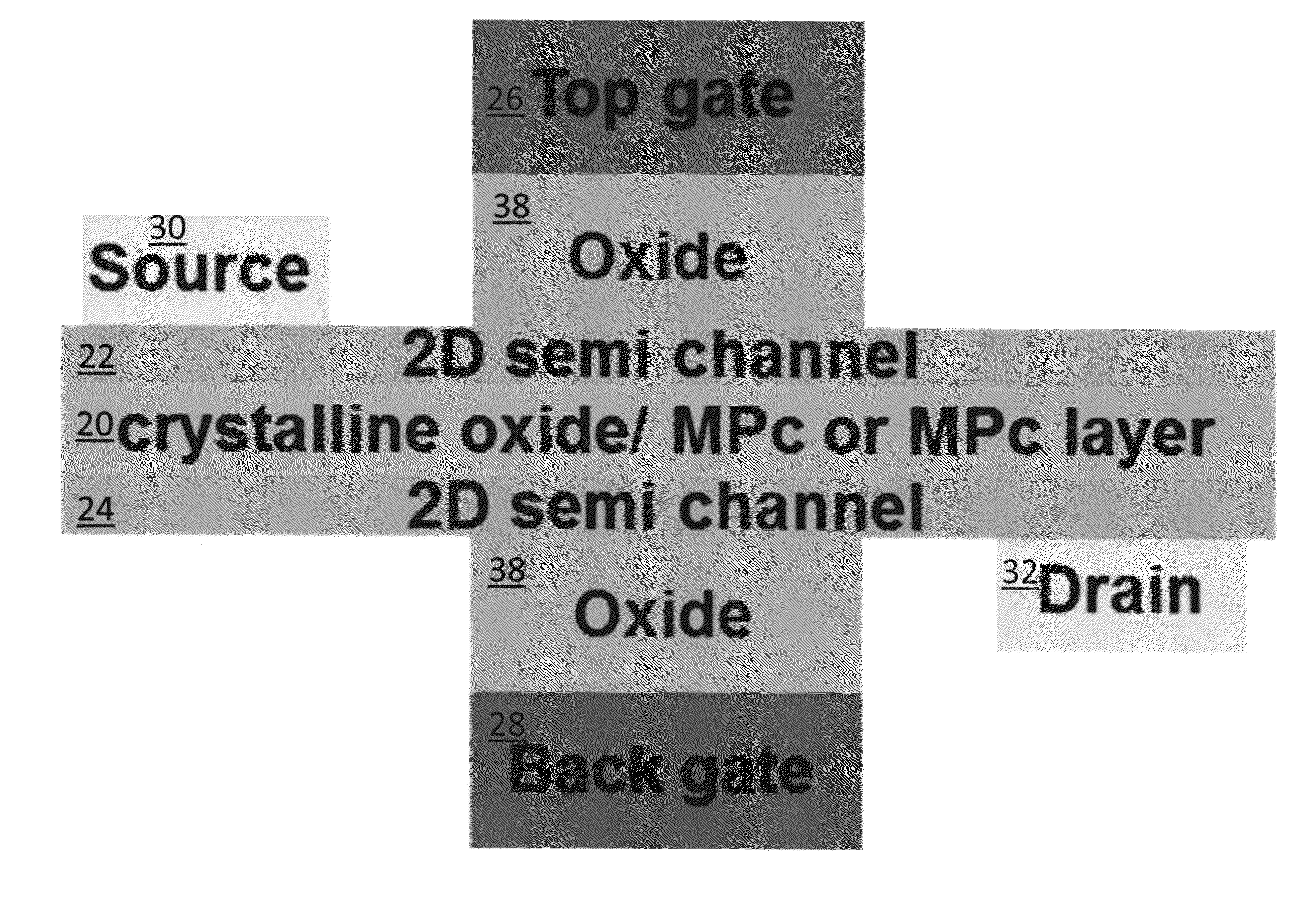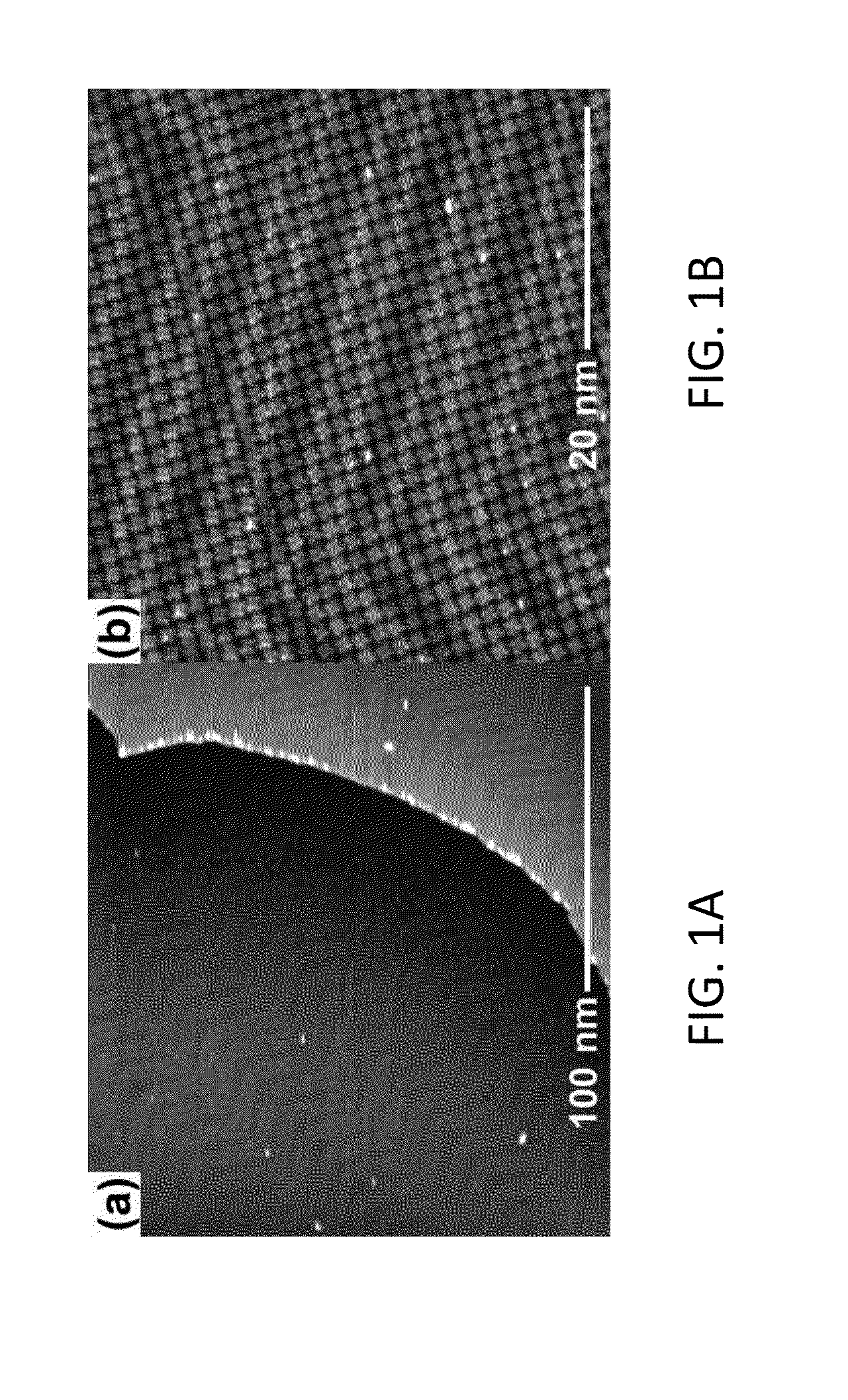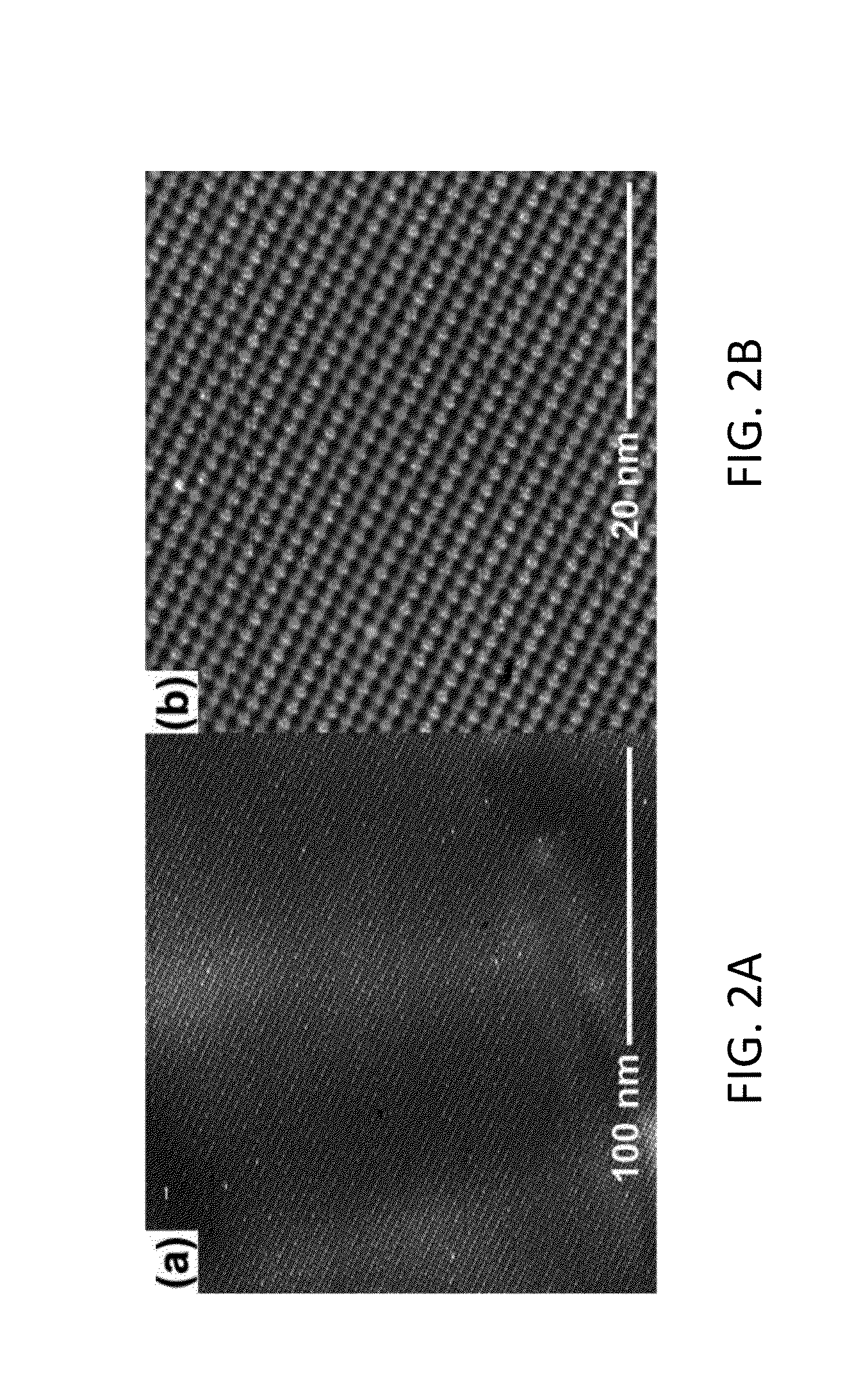Method for passivating surfaces, functionalizing inert surfaces, layers and devices including same
a technology of passivating surface and functionalizing inert surface, applied in the direction of semiconductor devices, basic electric elements, electrical apparatus, etc., can solve the problems of difficult to include 2d materials in device structures, difficult to grow oxides on graphene, and extremely unreactive 2d semiconductors such as graphene, and achieve the effect of high pressure processing
- Summary
- Abstract
- Description
- Claims
- Application Information
AI Technical Summary
Benefits of technology
Problems solved by technology
Method used
Image
Examples
Embodiment Construction
[0024]An embodiment of the invention is a method for passivation of various surfaces (metal, polymer, semiconductors) from external contaminants, and the functionalization of inert surfaces. The method of the invention can functionalize 2D semiconductor and other insert surfaces such as non-reactive metals, oxides, insulators, glasses, and polymers. The method includes formation of a monolayer, an ordered bilayer or an ordered multilayer of metal phthalocyanines (MPc).
[0025]The MPc can be TiOPc, AlOHPc, VOPc, FePc, CoPc, CuPc or other metal Pc, i.e. M is one of TiO, AlO, VO, Fe, Co, Cu or another metal ion or even a non-metal H2Pc. The MPc also includes crown-ether MPc. It is noted that although most of MPc molecules can be employed as coating materials, particularly preferred embodiments utilized polar MPc, such as TiOPc, VOPc, or AlOHPc. The polar MPc molecules have much higher reactivity for atomic layer deposition than non-polar MPc including FePc, CoPc CuPc, or H2Pc. In additio...
PUM
 Login to View More
Login to View More Abstract
Description
Claims
Application Information
 Login to View More
Login to View More - R&D
- Intellectual Property
- Life Sciences
- Materials
- Tech Scout
- Unparalleled Data Quality
- Higher Quality Content
- 60% Fewer Hallucinations
Browse by: Latest US Patents, China's latest patents, Technical Efficacy Thesaurus, Application Domain, Technology Topic, Popular Technical Reports.
© 2025 PatSnap. All rights reserved.Legal|Privacy policy|Modern Slavery Act Transparency Statement|Sitemap|About US| Contact US: help@patsnap.com



